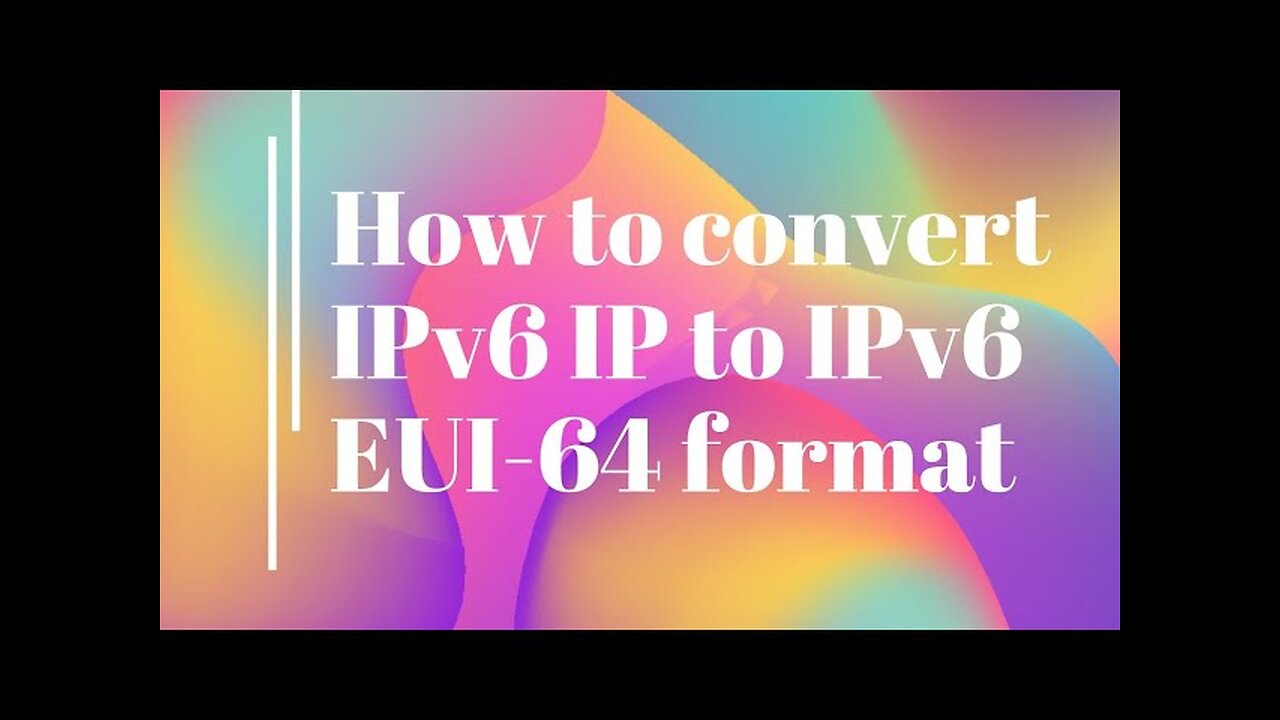Premium Only Content

How to Convert IPv6 Address to IPv6 EUI-64 Format
In this video, the presenter explains how to convert an IPv6 address into EUI-64 format. They start by discussing the basics of IPv6, noting that it is a 128-bit address compared to IPv4's 32-bit. There are two types of IPv6 addresses: Global Unicast (similar to IPv4 Public Address) and Unique Local (like IPv4 Private Address). Using the example IPv6 address 2001:db8:1:1:0013:ABAB:1001, the presenter breaks it down into three parts: Prefix ID (first 48 bits), Subnet ID, and Interface ID (or MAC address). They explain that to convert to EUI-64 format, you need the Subnet ID and the MAC address (00:13:AB:AB:10:01). The conversion process involves adding the hexadecimal value FFFE to the MAC address, dividing it into six parts, and then converting the first hexadecimal digit to binary. The presenter details the important step of changing the 7th bit and ultimately arrives at the final EUI-64 formatted address: 2001:db8:1:1:0213:ABFF:FEAB:1001.
**Timestamps**
00:02 - Introduction to IPv6 Address Conversion
00:20 - Understanding IPv6 Structure and Types
01:09 - Example IPv6 Address Breakdown
03:13 - Required Components for EUI-64 Conversion
04:05 - Adding FFFE to MAC Address
05:14 - Converting to Binary Format
06:03 - Adjusting the 7th Bit for Conversion
06:44 - Final EUI-64 Address Result
07:31 - Summary of Conversion Process
07:55 - Conclusion and Thanks for Watching
-
 LIVE
LIVE
Lofi Girl
3 years agolofi hip hop radio 📚 - beats to relax/study to
325 watching -
 2:08:23
2:08:23
FreshandFit
13 hours agoDeVory Darkins Realizes Women Aren't Even TRYING To Get Married
198K74 -
 5:40:05
5:40:05
Drew Hernandez
1 day agoTRUMP DOES DAMAGE CONTROL AFTER MTG FALLOUT & DEFENDS TUCKER CARLSON!
28K18 -
 27:05
27:05
Robbi On The Record
8 days ago $20.94 earnedThe Secret to Aging Strong: What Your Body’s Been Trying to Tell You
76.3K6 -
 1:53:43
1:53:43
Badlands Media
14 hours agoBaseless Conspiracies Ep. 159: Hunting Season for the Elite
87.6K22 -
 2:05:40
2:05:40
Inverted World Live
9 hours agoThe Technocratic Web of Control w/ 7SEES | Ep. 142
74.2K14 -
 2:43:56
2:43:56
TimcastIRL
8 hours agoDemocrats COLLUDED With Epstein To HURT Trump, Emails BACKFIRE
244K80 -
 11:32:19
11:32:19
Dr Disrespect
18 hours ago🔴LIVE - DR DISRESPECT - ARC RAIDERS - STELLA MONTIS QUESTS
254K18 -
 5:20:41
5:20:41
SpartakusLIVE
11 hours agoSolos on WZ to Start then ARC?! || Friends: UNBANNED
53K1 -
 12:58
12:58
Cash Jordan
11 hours agoMexican MOB OVERTHROWS Capital... as "Socialist President" FLOODS AMERICA with CARTELS
47.3K15